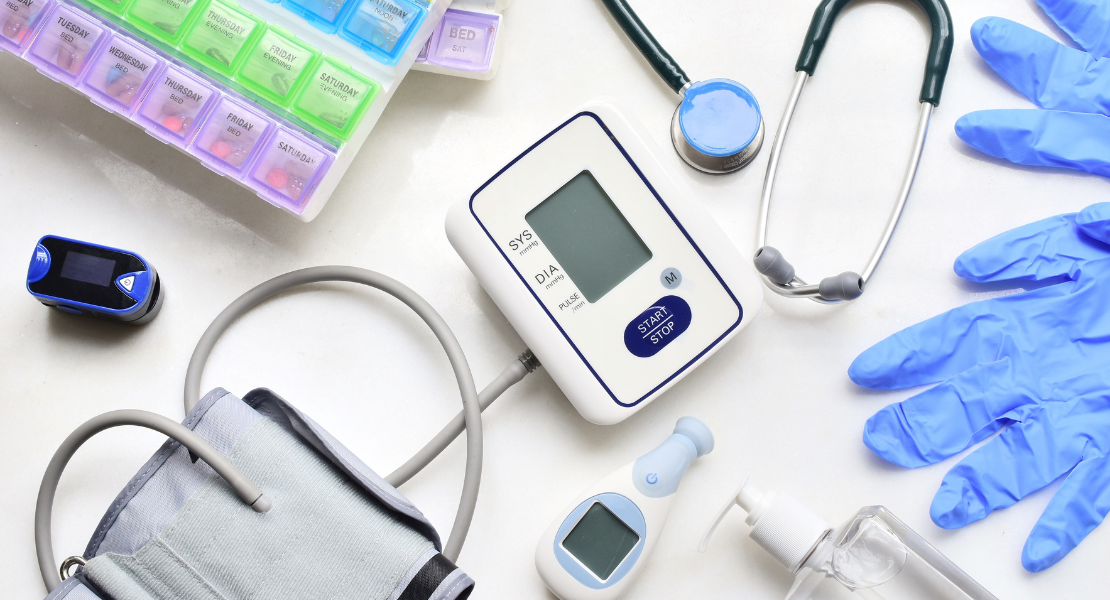How do you track hospital equipment?
There are different methods for asset tracking your hospital equipment - namely barcode or RFID. Which technology to use depends on a number of factors including overall objective, scope of product, budget, and, to a certain extent, environmental conditions.
What types of hospital equipment can you track?
The short answer to this question is that you can track any hospital equipment you want. However, just because you can doesn't necessarily mean you should.

Determining what equipment you plan to track is covered in our Ultimate Guide to Asset Tracking in step 3 and step 5.
- Step 3 - Perform Needs Analysis
Determine what information you need from your asset tracking records and how you will use it. Information is valuable, but too much data can be complicated to go through. Remember, there is such a thing as too much information. Ask yourself the following questions.
- What kind of assets do we need to track?
- What is our current solution (if one exists)?
- What are our pain points?
- What would we like to achieve with our new asset tracking system?
Not-for-profit institutions, governmental units and private businesses will have different requirements, especially in such areas as depreciation for tax purposes, accountability for assets, insurance, etc. Determine what regulations and procedures apply to your particular industry or agency.
- Step 5 - Make Your List (and Check it Twice)
Determine the approximate number of items to be located, identified and recorded. Set a minimum dollar value for each item to be included. Expensed items may also be included, especially if they are of significant value or are highly mobile assets, such as PCs and other equipment, which are highly vulnerable to theft and potential transfers for unauthorized use.
Download our Ultimate Guide to Asset Tracking for the remaining steps.
What are the benefits of asset tracking in healthcare?
The benefits of asset tracking in healthcare include:
- Tracking maintenance of life-sustaining machines
- Tracking asset location in real-time
- Recording calibration information easier
- Reducing unnecessary equipment purchases
- Providing a real-time account of safe handling
- Preventing theft and counterfeit of supplies
What is the best way to track hospital equipment?
The quick answer to this question is barcode or RFID; however, neither barcode nor RFID is right for every asset tracking application. It really depends on the specifics of the application. Determining the best way to track hospital equipment should become evident after qualifying your application and working through the steps outlined in the Ultimate Guide to Asset Tracking. Step 4, specifically, Determine Methodology will help determine which technology is best for your application.
- Step 4 - Determine Methodology
Decide on a record-keeping system. Each asset or asset group should have a record established for each item, either when it is initially purchased or when it was received from the supplier.
Barcode Tracking for Hospital Equipment

Barcode technology is one possible technology for tracking hospital equipment. There are many advantages to using barcode. First, barcode is less expensive and typically quicker to implement than other automatic tracking technologies like radio frequency identification or RFID. Another benefit of barcode is they can be designed to withstand very harsh conditions, i.e., autoclaves. Expanding on that idea, barcodes will work on whatever surfaces you put them on, whereas RFID requires specialty tags to read on metal surfaces.
RFID Tracking for Hospital Equipment
RFID technology is another possible technology for tracking hospital equipment. Just like barcodes, there are many advantages to using RFID. First, you do not need a line of sight to read an RFID tag like you do with barcode. Second, you can read many different RFID tags at the same time instead of scanning barcodes one by one. Another benefit of using RFID to track hospital equipment is read range. With most barcodes you need to be within inches to read the tag, whereas with RFID (depending on the frequency and tag) you can read from a much greater distance. The amount of data you can program to an RFID tag far exceeds the data you can program into a barcode.
Are Plastic or Metal Tags Better for Tracking Medical Equipment?
Both plastic and metal asset tags are great for tracking medical equipment; however, to determine which one fits your application it is important to qualify the application by asking a series of questions. What environmental conditions will the tags be expected to withstand? Caustics? High temperatures? How high will the temperatures be? There is a big difference between 200ºF which is fine for most plastics, but 500ºF is a completely different story. On the other hand, a slightly caustic solution is fine for most metal asset tags, but an extremely caustic solution will eat away at the metal and plastic asset tags may make more sense. We've put together a series of questions that will assist you in determining which type of asset tag will work best for your application.
How Much Does It Cost to Set Up an Asset Tracking System?
The cost of setting up an asset tracking system depends on several different factors. First, what is the scope of the project? How much do you want to track? What do you want to know about the assets you plan to track? Next, what technology do you plan to use in your asset tracking system? Do you have any system in place and just want to upgrade or are you starting from scratch? Does a barcode system make sense? What about using RFID? What about a combination of both barcode and RFID? We've put together some helpful tools to walk you through the process of setting up an asset tracking system including our Ultimate Guide to Asset Tracking, the Asset Tracking Checklist and our online Asset Tracking ROI Calculator.
How Can Metalcraft Help?
Metalcraft can assist you in developing an asset tracking/management program in a number of different ways. Our Ultimate Guide to Asset Tracking and the supplemental resource the Asset Tracking Checklist are great tools to use on your own or you can contact Metalcraft at [email protected] or 800-437-5283 to speak with one of our ID specialists who will qualify your application and get you on your way to better asset management.
 | About the Author: Tyler JohnsonTyler has extensive experience and expertise in the identification industry. Prior to Grey Trunk RFID, he worked at Metalcraft which helped him understand the importance of a high quality identification tag. Now he is leading the team at Grey Trunk RFID to offer the complete solution. |




